Here are some composers whose music we have particularly enjoyed playing, in many cases living composers whom we had the pleasure of meeting and working with in person, sometimes over a period of many years. Check them out!
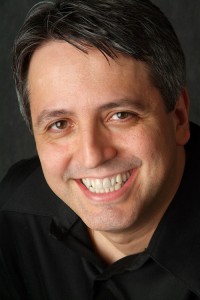 Efraín Amaya
Efraín Amaya
is a composer, conductor, and pianist now based in the Philadelphia area. For many years he lived in Pittsburgh where he taught at Carnegie Mellon University. From 2001 to 2005 he was R. James Whipple’s partner in the Pittsburgh New Residency, one of fourteen community residencies funded by MEET THE COMPOSER (which later merged with the American Music Center to become New Music America). The two composers worked for five years with four organizations, one of which was the Renaissance City Winds. Efraín writes bright, enthusiastic, and rhythmic music with truly memorable melodies that reflect his Venezuelan heritage. For the Winds he has written Aguaclara (“Clear Water,” 2002), a one-movement work for wind quintet and violoncello; Kaleidoscope (2003), a set of miniatures for wind quintet intended for children’s concerts but a cheerful beginning to any concert; Sidewalk Divertimenti (2003), a virtuoso three-movement work for piano and wind quintet; Maroon Dreams (2003), a song cycle for tenor voice, oboe, bassoon, and two horns; Ocean Light (2004), a stand-alone song for mixed chorus and wind quintet; and Chocolat (2011), a solo for unaccompanied bassoon. For more information about Efraín and his music, see his website at www.efrainamaya.com. Oh, by the way, his name is pronounced Eff – rye – een’
 Leonardo Balada
Leonardo Balada
was born in Barcelona, Spain, but finished his education in the United States in the 1960s. He moved to Pittsburgh, Pennsylvania, when he began teaching at Carnegie Mellon University in 1970. He has produced an impressive body of work in every genre, including opera. Originally working in an avant-garde (but decidedly non-serial) style, over the years his musical personality has assimilated elements of folk, ethnic, and popular music which are integrated into his style with great imagination and brilliant orchestration. The Winds were honored to perform his Sonata for Ten Winds at the Kennedy Center in 1981, when it was a finalist and took second place in the Friedheim Awards for Chamber Music that year. Also in the Winds’ repertoire are two early chamber works: Cuatris, for flute, clarinet, bassoon and prepared piano; and Geometries for flute/piccolo, oboe, clarinet, bassoon, trumpet, and percussion. For more information about Leonardo, especially in regard to recent recordings of his works, see www.naxos.com/person/Leonardo_Balada
 Andrea Clearfield
Andrea Clearfield
is an award winning American composer of music for orchestra, chorus, soloists, chamber ensembles, dance and multi-media collaborations, and is a resident of Philadelphia. Her fellowships fellowships have included Yaddo, the MacDowell Colony, Djerassi, Ragdale, Blue Mountain Center, Ucross and Virginia Center for the Creative Arts. She is the pianist with Philadelphia’s noted contemporary ensemble, Rélache, and was on the composition faculty of the University of the Arts from 1986-2011. She has been the founder, producer and host of the Philadelphia Salon Series for almost thirty years. As a composer, she has been praised by the New York Times for her “graceful tracery and lively, rhythmically vital writing.” Her works are performed widely in the U.S. and abroad, and number over 90. In the Winds’ repertoire: Unremembered Wings for oboe and piano, and Songs of the Wolf, for horn and piano. You can read more about Andrea and her work at www.andreaclearfield.com
 Alvin Etler
Alvin Etler
was a composer who made significant contributions to wind literature, and began his professional career as an oboist. Etler lived from 1913 to 1973, and taught at Yale, Cornell, the University of Illinois, and Smith College. A student of Paul Hindemith, he developed his own distinctive and complex tonal style. About half of his works were for winds! Bassoonists and clarinetists are grateful for his fine sonatas for those instruments; his Concerto for Wind Quintet and Orchestra was premiered by the New York Philharmonic in 1960 and recorded by the Louisville Orchestra. The Renaissance City Winds has programmed the Quartet for oboe, clarinet, bassoon, and viola, and looks forward to doing his two fine wind quintets. One of our most memorable performances was doing the incredibly virtuosic Concerto for Violin and Wind Quintet with the great violinist, Sidney Harth (1925-2011). Due to the challenging solo part, our 1984 concert was only the ninth performance of the work, written in 1958!
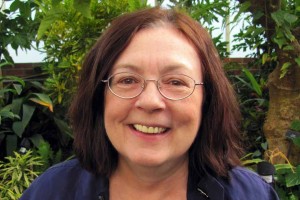 Nancy Galbraith
Nancy Galbraith
is a post-minimalist composer based in Pittsburgh. Composing since the late 1970s, she has created her own distinctive style praised for its rich harmonic texture, rhythmic vitality, emotional and spiritual depth, and wide range of expression. In writing for symphony orchestras, concert choirs, wind ensembles, chamber ensembles, electroacoustic ensembles, soloists and churches, Galbraith has played a leading role in defining the sound of contemporary classical music in the post-serial era. “Not the least bit ‘listener unfriendly’ but it couldn’t have been written at any other time but now.” [CHAMBER MUSIC MAGAZINE] She is Professor of Composition at Carnegie Mellon University. The Renaissance City Winds have commissioned two works from Nancy so far: her Suite for Woodwind Quintet of 1985 and Rhythms and Rituals (1995) for piano and quintet. Also in our repertoire: Dos Danzas Latinos (2002), a wonderful pair of Latin dances for wind octet that was commissioned by Sinfonietta Ventus in Mexico City. For more about Nancy and her music, see www.nancygalbraith.com
 Mildred Gardner
Mildred Gardner
Mildred Alvine Gardner was born in Quincy, Illinois, in 1899 and grew up in Greensburg, Pennsylvania. We crossed paths in the late 1970s when she was teaching at Carlow College [now Carlow University]. Her Three Pieces, for woodwind quartet, quickly became part of our permanent repertoire. The first two of these neoclassical pieces were written in 1947; the third came along to complete the set in 1961. A first-rate pianist in her youth, she established herself in New York City after graduating from Cincinnati Conservatory. When arthritis cut short her performing career, she returned to western Pennsylvania where she continued to compose and teach. She remained on the faculty at Carlow until her mid 80s, and died in Greensburg at the age of 95.
 Harmony Society
Harmony Society
was a German Protestant religious group who settled Harmony, Pennsylvania, and New Harmony, Indiana. Their third and final home was Economy, now the town of Ambridge, Pennsylvania, about twenty-five miles west of Pittsburgh. The Harmonists were an industrious and prosperous people; they developed and invested in the industrialization of the Pittsburgh area and donated the land for Geneva College. Due in part to their belief in celibacy, the Society suffered a long decline during the nineteenth century and was dissolved in 1905; the property is now a Pennsylvania historical site. During the bright years of the 1820s and 1830s, the Society hosted frequent musical performances (the first symphony in the United States was written for the Economy orchestra), and the library has survived to this day. The Renaissance City Winds have given many performances of these historic materials, many of which are still in manuscript. Some of those have taken place in the village gardens or the grand Feast Hall, shown in the photograph.
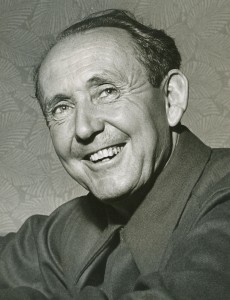 Roy Harris
Roy Harris
was one of America’s major symphonists, with thirteen to his credit. His dramatic one-movement Third Symphony of 1939 is one of the most-performed works of the genre. Born in Lincoln County, Oklahoma (on Abraham Lincoln’s birthday!), Harris grew up in California and his music reflects the great open spaces of the American West. Restless by nature, Harris moved around a lot and spent several years in Pittsburgh in the early 1950s. Just before his death in 1979, the Winds obtained from him two works in manuscript which are treasured additions to our repertoire. His Fantasy (Sextet) for piano and wind quintet is a historic work, for it was the sketch for the slow movement of his Symphony 1933 (his first). It is a fine example of Harris’ distinctive style with colorful polychordal harmony and engaging, subtly jazz-influenced rhythms. The Winds also gave what was likely the world premiere of several of his Lyric Pieces, miniatures for solo woodwinds and piano that date from about 1950.
 Joseph Wilcox Jenkins
Joseph Wilcox Jenkins
had a long and distinguished career. While chief arranger for the U.S. Army Field Band, he wrote the American Overture for Band, one of the standard repertoire works of twentieth-century band music. Jenkins singlehandedly created the core repertoire of the The United States Army Chorus during that time, which established the male chorus as a permanent group. He taught for decades at the Mary Pappert School of Music at Duquesne University in Pittsburgh, and served as organist and choir director for a number of churches and synagogues. His compositions numbered over two hundred. The Winds commissioned Jenkins to write a wind quintet, and he responded with “5-4-5,” a wonderfully eclectic piece incorporating Gregorian chant and featuring an off-stage oboe solo.
 Roland Leich
Roland Leich
was born in Evansville, Indiana, in 1911. After studying with Leo Sowerby in Chicago, he attended Curtis Institute and earned his masters at the Eastman School of Music, studying with Bernard Rogers. Through winning the Bearns Prize in composition, he spent the winter of 1933-34 in Vienna, studying with Anton Webern. After teaching at Dartmouth and serving in the U.S.Army during World War II, he spent most of his career teaching at Carnegie Mellon University in Pittsburgh, Pennsylvania, where he died in 1995. Although Leich himself was a cellist and pianist, he is best known for his vocal music, particularly the 47 songs on Emily Dickinson’s poetry. The Renaissance City Winds commissioned two works from Roland. For our Christmas Winds program, he compiled and wrote a set of variations on A Rose Breaks into Bloom, for wind quintet and harp. Then, for our Columbian Quincentennial concerts in 1992, he composed Emersonian Reflections for soprano and wind quintet, four songs using the poetry of Ralph Waldo Emerson. These two works are still unpublished, but much of his vocal and keyboard music is now available from www.viennawoodsmusic.com (ED. NOTE: we are saddened to report the passing of Thomas Leich, the composer’s son and proprietor of Vienna Woods Music, in 2014. Operations of the publishing company are indefinitely suspended as of this time; the website is “down.”)
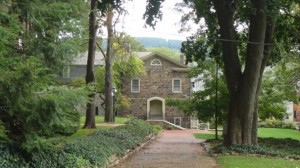 Moravian music
Moravian music
is one of Pennsylvania’s best-kept secrets. The Moravians, who settled Bethlehem PA in 1741, had an active cultural live and their society included paid professional musicians. Many European masterworks received their North American premieres not in Philadelphia or New York City, but in Bethlehem! Haydn’s Creation is just one of those. The Moravians can claim the first chamber written by an American-born composer (John Antes) and one of the earliest and most prolific composers of wind music, David Moritz Michael. The Winds’ repertoire includes two of Michael’s fourteen partitas for wind sextet and one of his two water music suites, in addition to a collection of anonymous horn duets. One of our most moving tour performances was getting to perform Parthia IV in the very church (shown in the picture) where it would have been premiered circa 1810!
 Vincent Persichetti
Vincent Persichetti
A lifelong Philadelphian, Persichetti (1915-1987) was one of the most important American composers of his generation, and inspired countless young people through his compositions and his inspired teaching; he was on the faculty of the Juilliard School for forty years. Wind players are most appreciative of his solo pieces for almost every instrument and his catalog of fine wind band works. His Pastorale is in the repertoire of almost every wind quintet, including ours. We corresponded with Persichetti and prompted him to edit and release King Lear, composed as a dance score for Martha Graham in 1948; Renaissance City Winds gave what was probably the first revival performance using one of the first published copies in 1978. Photographic portraits of Persichetti inevitably reveal his serious side; his wit, energy, and enthusiasm are much more evident in his self-portrait, shown here, as well as in his music.
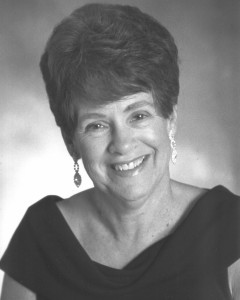 Marilyn Taft Thomas
Marilyn Taft Thomas
Marilyn Taft Thomas is Professor of Theory and Composition in Carnegie Mellon University’s School of Music. She has won prizes from the National Federation of Music and the National Harvey Gaul Competition, and received nine special awards in composition from ASCAP. Commissions have come from the Pennsylvania Council on the Arts, the McKeesport Symphony Orchestra, Carnegie Mellon University, the American Music Center, the Pittsburgh New Music Ensemble, the River City Brass Band, and the Strings Festival in Steamboat Springs, Colorado. Dr. Thomas was the first woman to receive a Ph.D. in composition from the University of Pittsburgh, and the only woman to serve as President of the Pittsburgh Alliance of Composers. Her computer music research and development of music theory software is internationally known. As a teacher, her innovative teaching methods have been cited by the Associated Press and honored with the prestigious Henry Hornbostel Teaching Award. In addition to composing and teaching, she has had a distinguished career as an administrator, serving as Head of Carnegie Mellon’s School of Music from 1988-1996 and again in 2006-07, and as Executive Director of the River City Brass Band from 2000-2003. The Winds have performed her Five Pieces for Five Players and the Trio for Flute, Bassoon, and Piano. For more about Marilyn and her music, see www.marilyntaftthomas.com
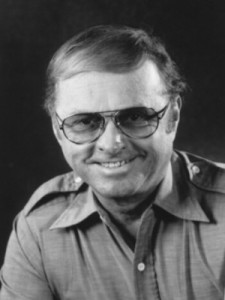 Robert Washburn
Robert Washburn
was a versatile and exciting composer who made great contributions to wind literature. Born in 1928, Washburn received his first two degrees at SUNY-Potsdam, a school to which he would eventually return for a 40-year plus teaching career and serving as Dean until his retirement. He received his PhD in composition from Eastman, where he studied with Howard Hanson, Bernard Rogers, and Alan Hovhaness. Additional studies were with Nadia Boulanger and Darius Milhaud. Before teaching at Potsdam, he served as chief arranger for the Air Force Band of the West. He was one of the participating composers in the Ford Foundation’s residency program in public schools, and these experiences contributed to the effectiveness and practicality of his instrumental writing. Bob developed a great interest in world music which he both taught and incorporated into his own writing in a natural and spontaneous way. In the Renaissance City Winds’ repertoire: Three Pieces for Three Woodwinds (1960) which was included in our New York debut at Carnegie Hall; the Concertino for Brass and Woodwind Quintets which we performed with the Annapolis Brass Quintet; and his Woodwind Quintet (1962). We so enjoyed the Three Pieces that we commissioned another trio from him, the French Suite (1980) for reeds. This has been a staple of our repertoire for over thirty years. Dr. Washburn passed away in November 1913 at the age of eighty-five. A list of his works may be found at http://www2.potsdam.edu/washburb.
All prose in this section Copyright ©2013-2015 by R. James Whipple. Short excerpts may be quoted provided attribution is provided. Complete passages may not be reproduced without advance permission.
